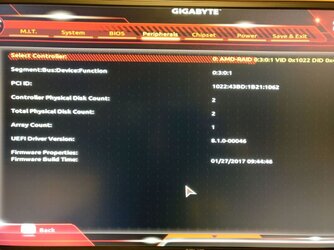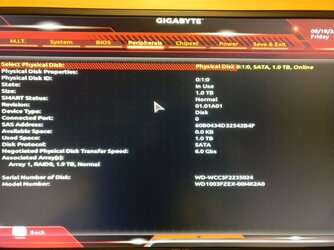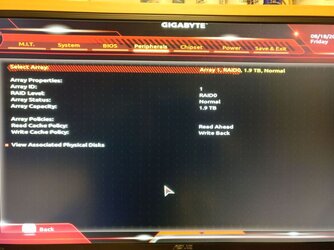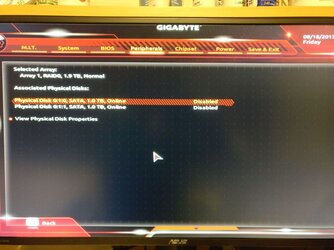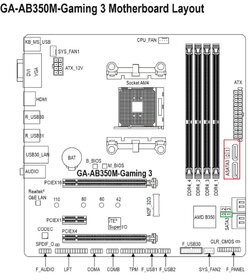My OS is on an M.2 SSD, and I installed the OS on this a while ago. Today I added 2 WD Black 1TB drives just for storage (both identical model, no bad sectors). The motherboard is a Gigabyte AB350M-Gaming 3 with the latest F5 EUFI. No matter what I do, if I change a disk to "Enabled" (see pic), then the other drive gets grayed out, so I can only "enable" 1 drive at a time. As soon as I've saved the settings and exit the EUFI, it reverts back to "disabled". I don't see the array under Windows disk management.
I have installed the Gigabyte chipset drivers which comes with the RAID driver.
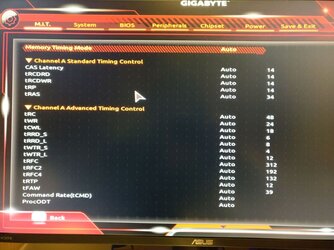
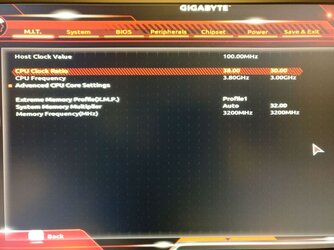
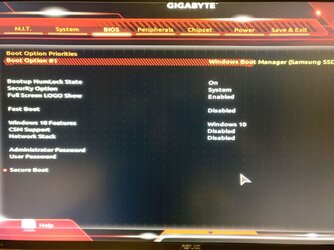
- - - Updated - - -
